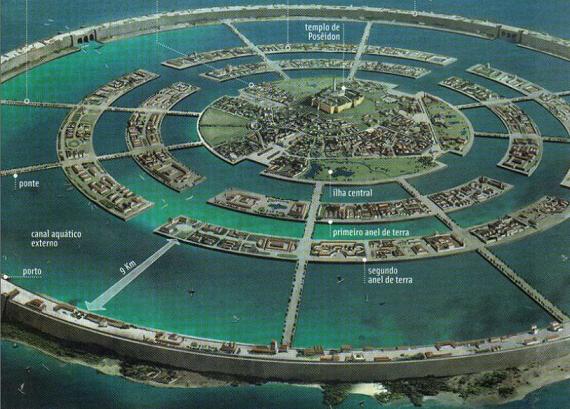|
|
General: ¿VENECIA ES LA ATLANTIDA CRISTIANA? (NEXO CON JUAN MARCOS)
Escolher outro painel de mensagens |
|
|
República de Venecia
De Wikipedia, la enciclopedia libre
La Serenísima República de Venecia nació como ciudad-estado en el norte de Italia, a orillas del mar Adriático, y luego reunió a todos los vénetos del Triveneto, Istria y Dalmacia. Existió como tal desde el siglo IX hasta 1797. También recibe el nombre de Serenissima Repubblica di San Marco, pues San Marcos es su santo patrono.
La Serenissima se constituyó progresivamente como Estado durante la Edad Media y se convirtió en una de las principales potencias económicas del mundo, ocupando un lugar preponderante en los intercambios comerciales entre el Mediterráneo occidental y oriental. Además, con sus instituciones oligárquicas notablemente estables durante casi un milenio, representó un papel político esencial.
A partir del siglo XVI experimentó una fase de declive político y territorial, eclipsado por un extraordinario desarrollo artístico, hasta que desapareció en 1797, vencida por Napoleón Bonaparte, pasando posteriormente a ser dominada por el Imperio austríaco y el Reino de Italia.
Se tiene como fecha de la fundación de Venecia el año 421, en el cual los habitantes de la región, ante la amenaza de las invasiones de longobardos y hunos que habían destruido la capital, Aquilea, se refugiaron en las marismas de la desembocadura del Po, en la laguna situada en el golfo, entre la península itálica y la balcánica, llamado más tarde precisamente golfo de Venecia. Las construcciones de esta época eran simples edificaciones lacustres, erigidas sobre palafitos. En razón de esta estratégica característica geográfica, Venecia tuvo desde entonces una gran independencia respecto a sus dominadores gracias a la barrera natural de la cadena de islas en una laguna profunda que impedía un ataque de caballería o infantería.
Dependencia del Imperio bizantino[editar]
Cuando el general Belisario conquistó para el Imperio bizantino gran parte de Italia en el siglo VI, Venecia pasó a formar parte del dominio de dicho imperio, dependiendo administrativamente de la ciudad de Rávena, sede del poder imperial en la península itálica, y estando gobernada por un oficial militar, el magister militum,[1] y subordinado a este, estaban los tribunos que ejercían la autoridad política en sus distritos.[2] La historia legendaria establece que para reemplazar a estos tribunos Paolo Lucio Anafesto fue elegido como el primer dux a finales del siglo VII. Sin embargo, el primer dux histórico surge de la revuelta en el exarcado de Rávena contra la iconoclasia del emperador, y contra el magister militum; es elegido el veneciano Orso Ipato como dux. Con la revuelta suprimida, el emperador reconoció al dux y le concedió el título de hypatos (cónsul). No obstante, Venecia siguió siendo una provincia del exarcado de Rávena, y se siguió nombrando al magister militum. No obstante, con la conquista lombarda del exarcado de Rávena, la provincia de Venecia permaneció en solitario bajo el gobierno del dux Orso Ipato, en calidad de gobernante autónomo manteniendo la fidelidad al imperio bizantino.[3]
Independencia y expansión[editar]

Máxima expansión de la República de Venecia; en rojo territorio veneciano (oscuro original, claro temporal)(en italiano).
La decadencia del poder imperial en el siglo IX fue aprovechada por Venecia para actuar de forma independiente con los francos y con los eslavos sin seguir los dictados del Imperio. Con la recuperación de la iniciativa bizantina en Italia en época de Basilio I, este concedió al dux veneciano el título de protospatharios, equiparándolo a la familia imperial.[4]
La ubicación de Venecia en en una laguna natural hacía arriesgado el intento de conquistarla, en tanto el arte naval europeo en la Baja Edad Media estaba muy poco desarrollado. Precisamente, fueron los marinos venecianos quienes colaboraron con el desarrollo de la construcción naval en Europa por razones primordiales de necesidad: Venecia poseía un territorio continental muy pequeño, por lo cual su fuente principal de subsistencia fue el comercio en el Adriático, y ante ello el estímulo a la navegación marítima se había transformado en una necesidad y, a la vez, en fuente de poder político y financiero.
En la Alta Edad Media, Venecia prosperó como nunca antes gracias al control del comercio con Oriente y a los beneficios que esto suponía, expandiéndose por el mar Adriático, aproximadamente desde 991 con el reinado del dux Piero II Orseolo, bajo cuyo régimen empezó la expansión veneciana por las costas de Dalmacia. El hecho que muy pocos estados de la época poseyeran los conocimientos navales de los venecianos favoreció a éstos en el desarrollo de una flota comercial y militar muy extensa para su época, que les sirvió para instalar puestos comerciales en cada rincón del Mediterráneo oriental.
En realidad, como la expansión político-militar del Imperio bizantino se concentraba en las rutas de tierra firme, la corte de Constantinopla dejaba fácilmente las islas mediterráneas a la ambición mercantil de los venecianos, que las aprovechaban como avanzadas comerciales hacia Asia Menor y el norte de África. La expansión territorial veneciana fue tan exitosa al punto que a mediados del siglo XI una bula papal reconoció la soberanía de Venecia sobre toda la costa oriental del Adriático.
La ubicación de Venecia en el medio del mar Mediterráneo le permitía un activo rol mercantil entre Bizancio y el resto de Europa, además su ubicación en el extremo norte del Adriático la defendía de ataques marítimos debido a su dominio militar sobre Dalmacia; tales circunstancias aumentaron el poderío veneciano en una época cuando las flotas comerciales en el Mediterráneo eran raras. No obstante, otras repúblicas marítimas de Italia empezaron a competir abiertamente con Venecia, como fue el caso de Pisa, Amalfi y Génova.
Los venecianos sostuvieron especialmente una fuerte rivalidad comercial y militar con la República de Génova, situada en el extremo noroeste de Italia, y que paulatinamente aumentó su influencia comercial en el Mediterráneo Oriental y en el mar Negro. Pese al aumento del poderío genovés entre los siglos XIV y XV, Venecia pudo mantener su hegemonía comercial sobre Génova a largo plazo.
Otro factor clave del éxtio veneciano fue la tolerancia religiosa y social de la República Veneciana hacia los judíos y musulmanes, de hecho esta tolerancia de los venecianos en materia religiosa les permitió comerciar libremente con los estados islámicos del Norte de África, sirviendo de valiosos intermediarios entre éstos y Europa, sin que las diferencias religiosas fueran obstáculo alguno para las relaciones comerciales.
Paralelamente, una política similar era seguida hacia el judaísmo pues se permitía libremente el asentamiento de comerciantes judíos en territorio veneciano, permitiendo a éstos ejercer el comercio e industria libremente, además de beneficiar a Venecia por darle acceso a las redes de contactos financieros que las comunidades judías de toda Europa habían conseguido preservar.
Del mismo modo, la Reforma Protestante de inicios del siglo XVI no tuvo mayor acogida en Venecia pero ello no impidió que los venecianos mantuvieran excelentes relaciones comerciales con países del Norte de Europa que habían abrazado el protestantismo, pese a las presiones de los Estados Pontificios y de España durante la Contrarreforma. A pesar que desde inicios del siglo XVI el Vaticano había intentado que Venecia implantase en sus dominios el Tribunal de la Inquisición, los gobernantes venecianos rechazaron aplicar en la práctica toda medida que les privase de sus relaciones comerciales con los no católicos.
Apogeo de la República[editar]
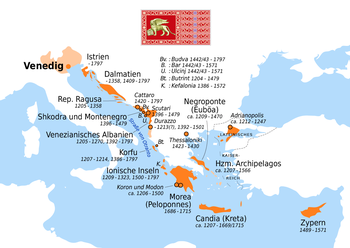
República de Venecia (naranja) y sus territorios en los siglos XV y XVI.

Gentile Bellini: Procesión en la PLaza de San Marcos (1496), 367x745 cm, Galleria dell'Accademia, Venecia.
Después del año 1100, Venecia era ya una gran potencia mediterránea en los planos económico, político y militar, al punto que podía ofrecer sus servicios como flota naval al propio Imperio bizantino y ganar gracias a ello privilegios comerciales excepcionales en Constantinopla, el mayor centro comercial de Europa en esos años, empleando para este fin una combinación de diplomacia y poderío mercantil.
El rol intermediario de los venecianos les permitió ejercer un control casi completo sobre los intercambios comerciales europeos con el Oriente Medio, mientras que los reinos musulmanes del Mediterráneo recurrían también a Venecia como intercesor comercial con el resto de Europa. La República Veneciana, más interesada en la preservación del comercio internacional que en la expansión religiosa o militar, aparecía como el intermediario mercantil ideal para los reinos mediterráneos de cualquier religión a partir del siglo XII, lo cual le permitió a Venecia acumular grandes riquezas y ganar ventajas comerciales.
La flota veneciana, por su poderío y gran tamaño, fue determinante para realizar el saqueo de Constantinopla en la Cuarta Cruzada en 1204, acelerando con este hecho la decadencia del Imperio bizantino. Como consecuencia de la severa debilidad bizantina, Venecia logró anexionarse Creta y Eubea a inicios del siglo XIII, expandiendo aún más su poder y riqueza, llegando las flotas comerciales venecianas a instalar bases comerciales inclusive en las orillas del mar Negro, específicamente en la actual costa de Crimea. Esta expansión hacia territorios de la Rus de Kiev le permitió a los comerciantes venecianos instalarse en los puntos más occidentales del comercio asiático, ganando con ello un privilegiado acceso a los valiosos productos traficados por la Ruta de la Seda desde China. Esta importantísima ventaja comercial, inexistente para otros estados europeos de la época, fue explotada excelentemente por los venecianos.
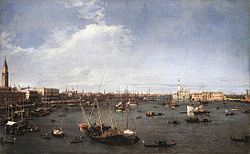
Venecia por Canaletto, 1738-40.
http://es.wikipedia.org/wiki/Rep%C3%BAblica_de_Venecia
|
|
|
|
|

escalofrio.com
central de la Atlántida,
728 × 440 - 105k - jpg |

identi.li
La Atlantida Encontrada.
2345 × 3150 - 555k - jpg |
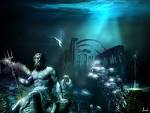
taringa.net
La Atlántida
1024 × 768 - 125k - jpg |

taringa.net
atlantida
449 × 287 - 32k - jpg |

despiertaalfuturo.blog...
Algunos especialistas le han
1440 × 694 - 462k - jpg |
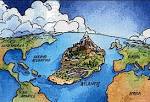
taringa.net
Recordando en todo momento la
1134 × 769 - 914k - jpg |

atlantisbolivia.org
Atlantida fue "tan grande como
1328 × 731 - 1931k - png |

youtube.com
hqdefault.jpg
480 × 360 - 35k - jpg |

taringa.net
atlantida
570 × 409 - 55k - jpg |

escalofrio.com
La erupción volcánica de
250 × 311 - 14k - jpg |

veritasconexion.blogsp...
autor de La Atlántida lo
400 × 209 - 73k - jpg |

actualidad.rt.com
la 'Atlántida española':
630 × 354 - 47k - jpg |
|
|
|
|
|

identi.li
Temporada 1
1280 × 1024 - 294k - jpg |
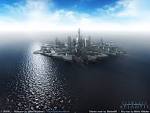
fanpop.com
sga - stargate-atlantis
1600 × 1200 - 504k - jpg |

3djuegos.com
StarGate Atlantis (los
500 × 373 - 112k - jpg |
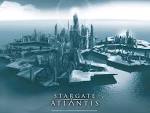
es.stargate.wikia.com
Archivo:Wallpapers
1600 × 1200 - 283k |

descargaroja.com
Captura
1920 × 1080 - 126k - jpg |
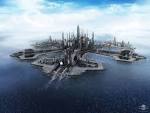
wall.alphacoders.com
TV Show - Stargate Wallpapers
2400 × 1800 - 911k - jpg |

entertainmentwallpaper...
Stargate: Atlantis Wallpaper
1280 × 1024 - 261k - jpg |

en.wikipedia.org
Seasons 4–5[edit]
410 × 408 - 188k - png |

comicvine.com
The end?
1152 × 870 - 133k - jpg |

taringa.net
Mi Homenaje A StarGate
1280 × 1024 - 213k - jpg |

coldilian.deviantart.com
Stargate Atlantis City 2014
3840 × 2160 - 11439k - png |

geektyrant.com
Stargate:Extinction also
439 × 306 - 112k - jpg |

matthewkadish.com
STARGATE TO THE COSMOS
1280 × 720 - 244k - jpg |

fanpop.com
sga - stargate-atlantis
2560 × 1600 - 1547k - jpg |

hdw.eweb4.com
jpg 623 Stargate Atlantis
1920 × 1200 - 557k - jpg |

imdb.com
Stargate: Atlantis (2004)
214 × 321 - 19k - jpg |

coldilian.deviantart.com
Stargate Atlantis City 2014
3840 × 2160 - 11711k - png |

hdw.eweb4.com
Stargate Atlantis wallpaper
1920 × 1200 - 812k - jpg |

en.wikipedia.org
Stargate Atlantis intro.jpg
640 × 360 - 28k - jpg |

fanpop.com
Atlantis Stargate Atlantis
1600 × 1200 - 290k - jpg |
|
|
|
|
|
Modern Atlantis – Venezia, Italy

Clotheslines:
On the way to the Giardini, the main building for the Biennale exhibits, evidence of actual Venetian life.
Venice was my first stop outside of English speaking Europe so naturally my friends asked what I thought of my first taste of Italy. “Was there any culture shock?”, they ask. I tell them my experience in Venice was like a game of hide and seek. The objective of the game was to find evidence of Italians, the score was 1-0; Venice-Marissa. I tell them that it’s obvious that Venice will make a beautiful Atlantis. They smile and nod and we gloss over my suggestion that the city would do better underwater.

Bridge Over Troubled Water
The entrance to “A Venice Fish”, my hostel. The canal beneath is suffering from the erosion created by motorized boats.
I arrived in Venice from the airport straight into the bustling Piazzale Roma. It’s an uncomfortable 35 degrees and sunny in the plaza and I may have been grumpy. The only thing I hate more than extreme heat is being eaten by a polar bear so you can consider the following account slightly biased: The bus station itself was a clever trap for tourists. Maps, tacky souvenirs and irrelevant merchandise stop up every gap leaving the piazza. The famous architecture provides a nest for the shops hawking postcards, fake Murano glass, hotels and 11 euro beer. Venice, to the Italians, must seem like the local hell.
In actuality, Venice is rotting. Literally, the foundations of buildings are suffering from the harsh waves of the relatively new motor boats and poor maintenance. Figuratively, the place seems to have complex relationship with its own vanity; it’s beautiful but doesn’t know what to do with it so it cheaply sells it to foreigners along with a sentence or two of weak explanations to suggest any meaningful past.

Golden Masks
Brushing up on local culture, I come across articles that lament how some of the most extravagant places in Venice stand empty half of the year until the Bieannale (Annual Art/Architecture Exhibits that absorbs the city) uses it for pop up art exhibits. Gondoliers singing for hire at any time of day (traditionally, the songs are made for nighttime) like clockwork songbirds. The management of the city makes one thing clear: Venice is an oligarchy driven by tourists and the locals hate that. Trust me, it shows in the service. Six lessons on my phoneapp DuoLingo was enough for me to understand that the man in the Post Office was openly deriding me to his co-worker over the fact that I asked if he could speak English.

Interior of Al Timon:
Intimate, ci?
In the less frequented alleys, the tourists’ deathgrip on the city’s livelihood is noticeably gentler. There are dirty children’s shoes propped nonchalantly up against the windows and comically colourful sheets flapping overhead. At night, the blue of the sidewalks slips out to cool the city. I end up at Al Timon, a watering hole for the locals. My limitation in Italian is suddenly an issue, not an expectation. Here, people are off duty. No one smugly answers “a little bit” and then chides you to their colleague in Italian when you ask them if they know English. They complain about the tourists, they tell jokes, they talk about the economy. The Italian language is a funny thing. Words with a hard, glinting edge like “Arsenal” become “R-Sun-Aly”; the softness of the word bending the sound like a hand reaching out and curling the barrel of a musket just as the night comes to soften the locals in Venice.

Canalside
View from one of the exquisite buildings used as art galleries in the city
As I walked outside into the dark of the night from the dark of a play, I imagined what explorers would think if they came to our world now. Or if we were covered by volcanic ash and frozen in time. Would they look at Venice and say, “Look at this! Why, it’s as if time has stopped early in this one!”. Will they think of it the way we might of Atlantis if we ever do find it: a city stopped in the midst of motion, in the moment of greatness and rushed to a watery peace. And covered in tourists too!

Outside Al Timon:
Two girls enjoy their aperatifs canalside
|
|
|
|
|
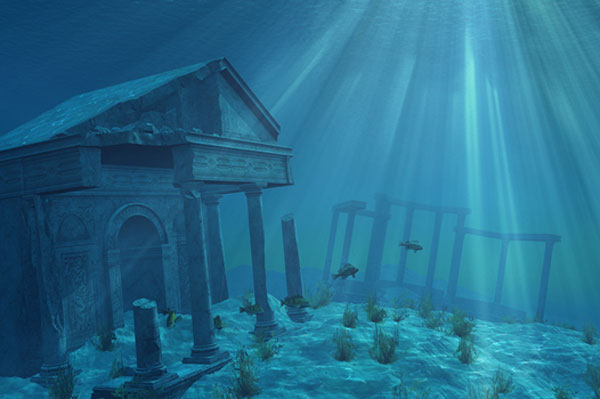
The ancient city of Lacedaemon – is it the legendary Atlantis?
The name Lacedaemon is derived from the verb, λαγχάνω (lachano), to assign somebody something by lot, and δαίμων (daemon), which means God in ancient Greek. Lacedaemon therefore denotes the divine lot, a piece of the world given to the God Poseidon, according to Plato, who identifies Lacedaemon with Atlantis.
I consider it worthwile to mention a remark by J. Spanuth in his book, ‘Atlantis: Heimat, Reich and Schicksal der Germanen’, (Tuebingen 1965), that Atlantis is “the oldest, most disputed, most hazardous and clearly most thankless, but still the most rewarding and most intriguing matter that Antiquity has bequeathed to us”.
There is a vast bibliography about Atlantis, but the modern scholarship concluded that to locate Atlantis and to prove the validity of its identification, four points of agreement must be met and generally accepted. (See E.Bloedow. ‘Fire and Flood from Heaven: Was Atlantis at Troy?’ La Parola del Passato 48, 1993, pp.109-160.
- Atlantis was an island.
- It lay beyond the “Pillars of Hercules”.
- It was larger than Asia and Libya together.
- Its destruction (sinking) produced a barrier of impassable mud.
These four prerequisites are completely fulfilled in the case of Lacedaemon.
The name, features, and location of Lacedaemon have been hotly debated from Antiquity to modern times. Lacedaemon was mentioned for the first time in the second Book of Iliad, in the so-called Catalogue of the Ships, verse 581, as the first city of the Kingdom of Menelaos in Lakonia – “Οι δ’ είχον κοίλην Λακεδαίμονα κητώεσσαν” (‘E de ichon kili Lacedaemon kitoesan’). Κοίλη (‘kili’) and κητώεσσα (‘kitoesan’) are the two traditional epithets steadily connected with Lacedaemon. ‘Κili’ means hollow, everybody agrees on that, but the epithet ‘kitoesan’ has been variously interpreted. It might refer either to its geological formation and identity – that it is full of ravines and subterranean caustic splits – or to its island nature, in this case abounded with κήτη (‘kiti’), sea monsters or big fish (dolphins, turtles, whales, seals etc.).

The Iliad by Homer. Credit: BigStockPhoto
Taking for granted that in northern Lakonia there once existed a huge lake from the Pleiocene period, measuring 35 square kilometres, the epithet ‘kitoesan’ may well fit the geology of the site of Lacedaemon. The lake is now dry and contains big deposits of lignite layers, similar to those in the adjacent plain of Megalopolis. The date of dessication or draining of the lake in the area of mount Taygetos is of paramount importance for the history of Lacedaemon, its identity, and identification with Atlantis.
Plato, in Timaeus and Critias, describes Atlantis as an island in what he calls a ‘Pontos’, a word meaning Sea or Sea-lake (Timaius 24E Critias 113-114 B). The other geological and geographical coordinate of the area is the Πέλαγος (‘Pelagos’), erroneously interpreted by Atlantologists as ‘Ocean’. Pelagos in Greek signifies a large and extensive area, such as the Aegean Pelagos or the Ionian Pelagos. Pontos was the huge lake of Lacedaemon, Pelagos was the large and navigable river Eurotas.
The inhabitants of Atlantis, known by various names, like Hyperboreans, Phaeakes, Phoinikes, Atlantes, Minyans etc, were thought to live in a remote area, safe in their natural environment, reluctant to be visited by other people. There they lived a whole millenium, eternally young, and they were beloved to the Gods. Tyndareos, the father of Helen and the divine Twins Kastor and Polydeukes lived where Lakonia ended, very close to Arcadia - “εν τοις εσχάτοις της Λακεδαιμονίας” (‘En tis eshatis tis Lacedaemonias’).
We have reasons to suppose that the area of the lake was covered by small islands, some natural, others artificial, founded upon wooden tree trunks, taken from the densely forested mount Taygetos, an activity described by Plato in reference with the works of the Atlantians in the main island in the Pontos. The work and the plan may be paralleled with the miraculous achievements of the Venetians in the large Lagoon in the Adriatic. This “Civitas Serenissima” was built entirely upon wooden trunks and was composed of numerous islands, constructed densely to each other.
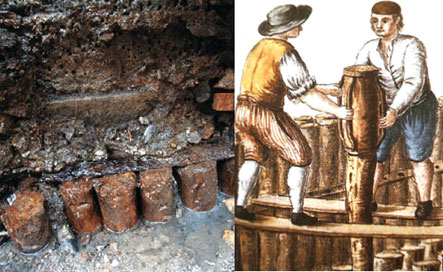
The city of Venice was built on wooden foundations.
Plato himself speaks of other islands, besides Atlantis, in the same Pontos. Atlantis lay at the eastern fringes of the sea, near the exit of the river, beyond the Pillars of Hercules and was surrounded by islands, which were approached from Atlantis both by sea and land (Timaeus: “εξ ης επιβατόν επί τας άλλας νήσους τοις τότε εγένετο πορευομένοις”). Plato seems to know well not only the geophysical conditions of the area of Lacedaemon, he also knew the geography of the island group and most probably the names of the islands, at least of some of them.
Taking that into consideration, we may come to the solution of the most difficult of the Platonic references to Atlantis, which is described by Plato as being larger than Asia and Libya together. What was known as ‘Asia’ and ‘Libya’ at the time were small islands in the lake of Lacedaemon, and we know that Asia and Libya were Laconian toponymics (see my book LACEDAEMON, volume II, p. 399 ff).
Accordingly, we fix one of the four points of agreement posed by Atlantologists. Plato’s trustworthines is strengthened by the reference in ‘The Odyssey’ that Ithaca, the original homeland of Odysseus, lay in a similar landscape. It is described as “χθαμαλή εν αλί, πανυπερτάτη προς ζόφον”, i.e. hollow and the most remote to North-West, though many other islands that were close to each other, lay to the East and South (“νήσοι πολλαί, μάλα σχεδόν αλλήλησιν”, Odyssey, book 9, 22-3).
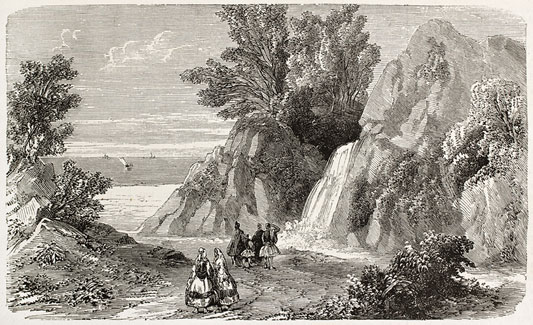
Arethusa fountain old view, Ithaca island, Greece. Created by Provost, published on L'Illustration. Credit: BigStockPhoto
Odysseus, the Argonaut, was at home in Lacedaemon, where he acquired the famous composite-bow of Iphitos and it was not a mere coincidence that his descendant Telemachos came to Lacedaemon many years or centuries thereafter to visit Menelaos and Helen in order to be informed about his farther’s return to Ithaca.
Part Two – The Location of Atlantis and the Pillars of Hercules
By Dr Theodore Spyropoulos
Featured image: Artist’s depiction of Atlantis. Credit: BigStockPhoto
http://www.ancient-origins.net/opinion-guest-authors/ancient-city-lacedaemon-it-legendary-atlantis-001723
|
|
|
 Primeira Primeira
 Anterior
16 a 30 de 150
Seguinte Anterior
16 a 30 de 150
Seguinte Última
Última
|
|
| |
|
|
©2025 - Gabitos - Todos os direitos reservados | |
|
|












